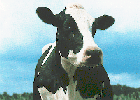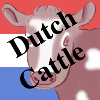
The relation between udder depth and culling rate



The udder depth is one of the most important udder traits. The udder should be carried well above the hocks, which contributes optimally to the ease of milking. Too deep udders might result in higher incidence of teat and/or udder damage. Too shallow udders are preferred less, since they might go hand in hand with lower milk production. Adequate capacity of the udder is essential to enable high milk production over a long period of time. From this point of view, proper length of the udder floor is of importance, since it contributes significantly to the milk storage capacity of the udder. From figure 4 it can be seen that udder depth scores between of 5 and 6 are optimal in regard to herdlife. Moreover, the udder should be well-balanced with a view to its positive influence of ease of milking, udder health and herdlife. Fore udders of first-lactating heifers are preferred to be slightly more developed than rear udders, since rear udders develop more with age, on average.